Luca Frittoli
Change Detection in Multivariate data streams: Online Analysis with Kernel-QuantTree
Oct 17, 2024
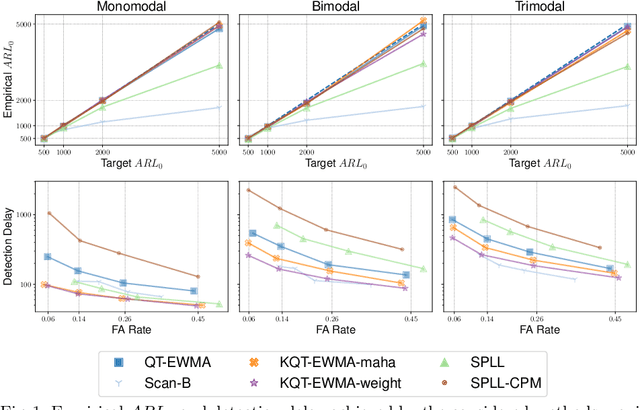
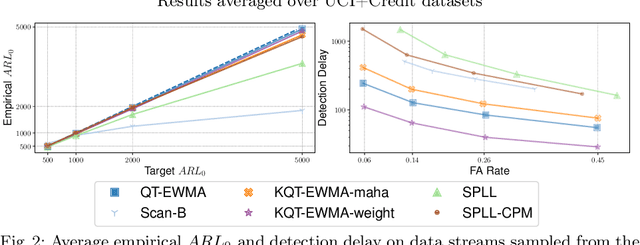

Abstract:We present Kernel-QuantTree Exponentially Weighted Moving Average (KQT-EWMA), a non-parametric change-detection algorithm that combines the Kernel-QuantTree (KQT) histogram and the EWMA statistic to monitor multivariate data streams online. The resulting monitoring scheme is very flexible, since histograms can be used to model any stationary distribution, and practical, since the distribution of test statistics does not depend on the distribution of datastream in stationary conditions (non-parametric monitoring). KQT-EWMA enables controlling false alarms by operating at a pre-determined Average Run Length ($ARL_0$), which measures the expected number of stationary samples to be monitored before triggering a false alarm. The latter peculiarity is in contrast with most non-parametric change-detection tests, which rarely can control the $ARL_0$ a priori. Our experiments on synthetic and real-world datasets demonstrate that KQT-EWMA can control $ARL_0$ while achieving detection delays comparable to or lower than state-of-the-art methods designed to work in the same conditions.
AdaCLIP: Adapting CLIP with Hybrid Learnable Prompts for Zero-Shot Anomaly Detection
Jul 22, 2024



Abstract:Zero-shot anomaly detection (ZSAD) targets the identification of anomalies within images from arbitrary novel categories. This study introduces AdaCLIP for the ZSAD task, leveraging a pre-trained vision-language model (VLM), CLIP. AdaCLIP incorporates learnable prompts into CLIP and optimizes them through training on auxiliary annotated anomaly detection data. Two types of learnable prompts are proposed: static and dynamic. Static prompts are shared across all images, serving to preliminarily adapt CLIP for ZSAD. In contrast, dynamic prompts are generated for each test image, providing CLIP with dynamic adaptation capabilities. The combination of static and dynamic prompts is referred to as hybrid prompts, and yields enhanced ZSAD performance. Extensive experiments conducted across 14 real-world anomaly detection datasets from industrial and medical domains indicate that AdaCLIP outperforms other ZSAD methods and can generalize better to different categories and even domains. Finally, our analysis highlights the importance of diverse auxiliary data and optimized prompts for enhanced generalization capacity. Code is available at https://github.com/caoyunkang/AdaCLIP.
Class Distribution Monitoring for Concept Drift Detection
Oct 16, 2022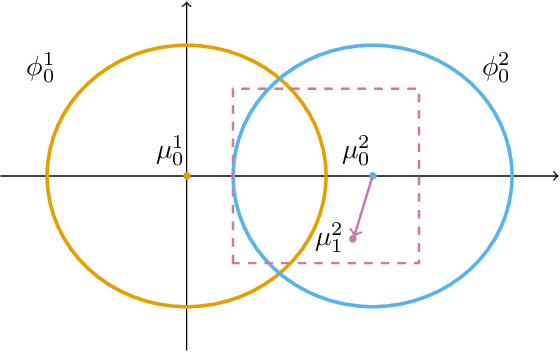
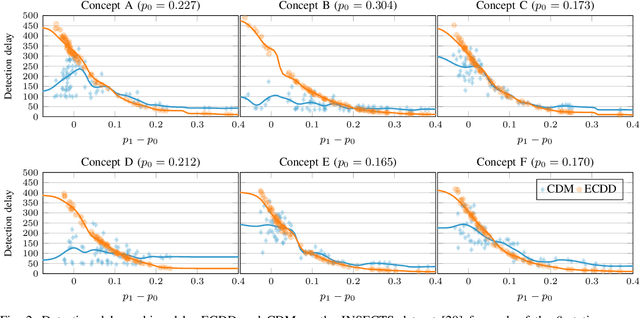
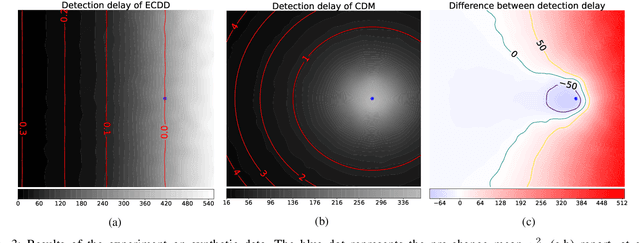

Abstract:We introduce Class Distribution Monitoring (CDM), an effective concept-drift detection scheme that monitors the class-conditional distributions of a datastream. In particular, our solution leverages multiple instances of an online and nonparametric change-detection algorithm based on QuantTree. CDM reports a concept drift after detecting a distribution change in any class, thus identifying which classes are affected by the concept drift. This can be precious information for diagnostics and adaptation. Our experiments on synthetic and real-world datastreams show that when the concept drift affects a few classes, CDM outperforms algorithms monitoring the overall data distribution, while achieving similar detection delays when the drift affects all the classes. Moreover, CDM outperforms comparable approaches that monitor the classification error, particularly when the change is not very apparent. Finally, we demonstrate that CDM inherits the properties of the underlying change detector, yielding an effective control over the expected time before a false alarm, or Average Run Length (ARL$_0$).
Composite Layers for Deep Anomaly Detection on 3D Point Clouds
Sep 23, 2022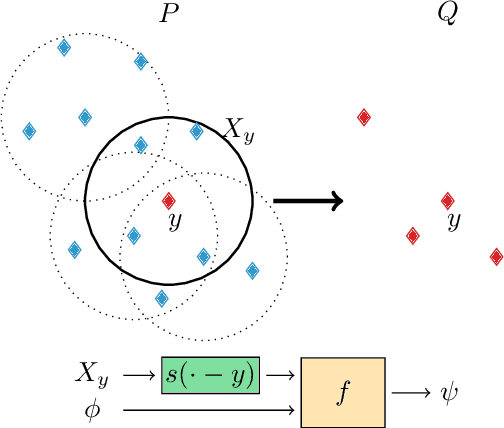
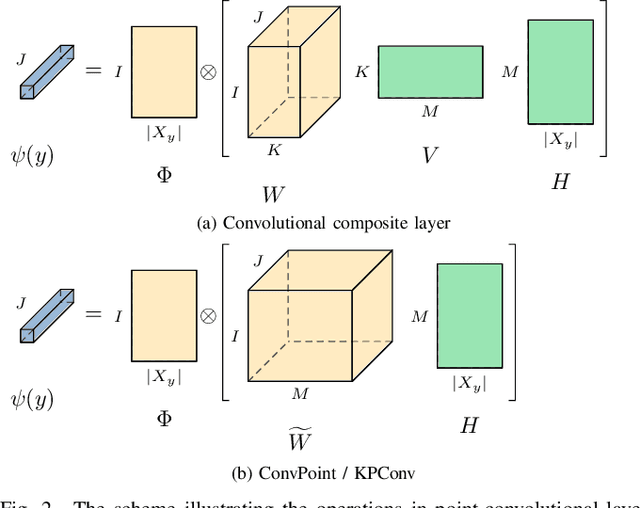
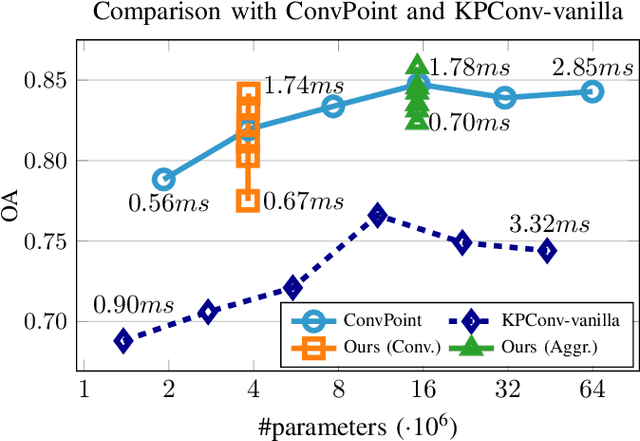
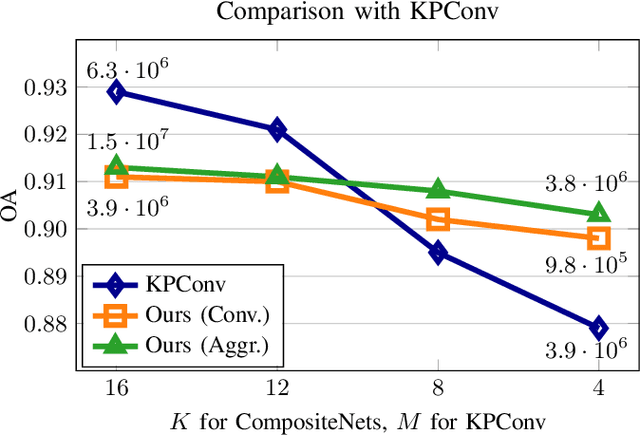
Abstract:Deep neural networks require specific layers to process point clouds, as the scattered and irregular location of points prevents us from using convolutional filters. Here we introduce the composite layer, a new convolutional operator for point clouds. The peculiarity of our composite layer is that it extracts and compresses the spatial information from the position of points before combining it with their feature vectors. Compared to well-known point-convolutional layers such as those of ConvPoint and KPConv, our composite layer provides additional regularization and guarantees greater flexibility in terms of design and number of parameters. To demonstrate the design flexibility, we also define an aggregate composite layer that combines spatial information and features in a nonlinear manner, and we use these layers to implement a convolutional and an aggregate CompositeNet. We train our CompositeNets to perform classification and, most remarkably, unsupervised anomaly detection. Our experiments on synthetic and real-world datasets show that, in both tasks, our CompositeNets outperform ConvPoint and achieve similar results as KPConv despite having a much simpler architecture. Moreover, our CompositeNets substantially outperform existing solutions for anomaly detection on point clouds.
Deep Open-Set Recognition for Silicon Wafer Production Monitoring
Aug 30, 2022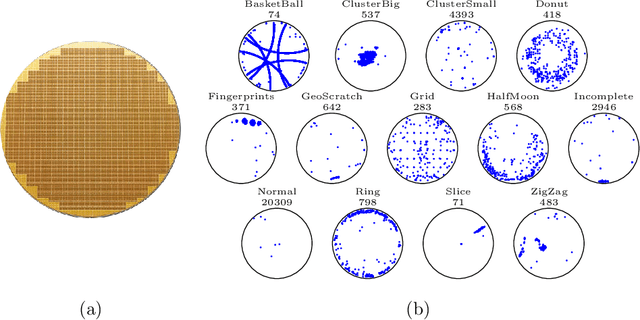
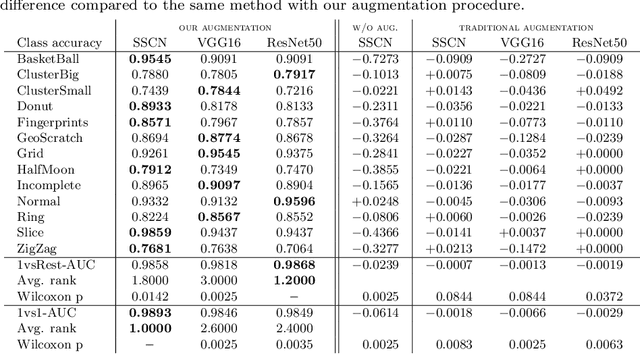
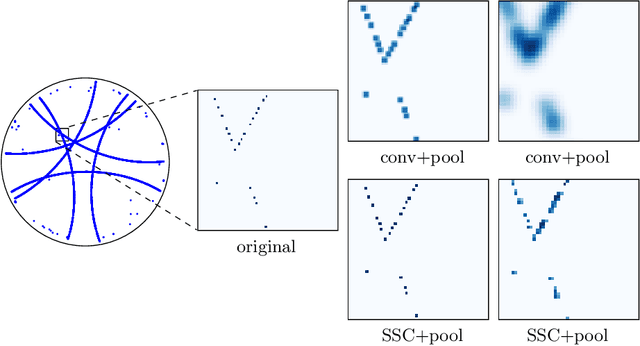
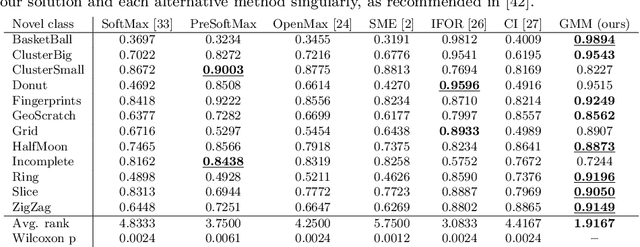
Abstract:The chips contained in any electronic device are manufactured over circular silicon wafers, which are monitored by inspection machines at different production stages. Inspection machines detect and locate any defect within the wafer and return a Wafer Defect Map (WDM), i.e., a list of the coordinates where defects lie, which can be considered a huge, sparse, and binary image. In normal conditions, wafers exhibit a small number of randomly distributed defects, while defects grouped in specific patterns might indicate known or novel categories of failures in the production line. Needless to say, a primary concern of semiconductor industries is to identify these patterns and intervene as soon as possible to restore normal production conditions. Here we address WDM monitoring as an open-set recognition problem to accurately classify WDM in known categories and promptly detect novel patterns. In particular, we propose a comprehensive pipeline for wafer monitoring based on a Submanifold Sparse Convolutional Network, a deep architecture designed to process sparse data at an arbitrary resolution, which is trained on the known classes. To detect novelties, we define an outlier detector based on a Gaussian Mixture Model fitted on the latent representation of the classifier. Our experiments on a real dataset of WDMs show that directly processing full-resolution WDMs by Submanifold Sparse Convolutions yields superior classification performance on known classes than traditional Convolutional Neural Networks, which require a preliminary binning to reduce the size of the binary images representing WDMs. Moreover, our solution outperforms state-of-the-art open-set recognition solutions in detecting novelties.
Deep Autoencoders for Anomaly Detection in Textured Images using CW-SSIM
Aug 30, 2022Abstract:Detecting anomalous regions in images is a frequently encountered problem in industrial monitoring. A relevant example is the analysis of tissues and other products that in normal conditions conform to a specific texture, while defects introduce changes in the normal pattern. We address the anomaly detection problem by training a deep autoencoder, and we show that adopting a loss function based on Complex Wavelet Structural Similarity (CW-SSIM) yields superior detection performance on this type of images compared to traditional autoencoder loss functions. Our experiments on well-known anomaly detection benchmarks show that a simple model trained with this loss function can achieve comparable or superior performance to state-of-the-art methods leveraging deeper, larger and more computationally demanding neural networks.
Nonparametric and Online Change Detection in Multivariate Datastreams using QuantTree
Aug 30, 2022
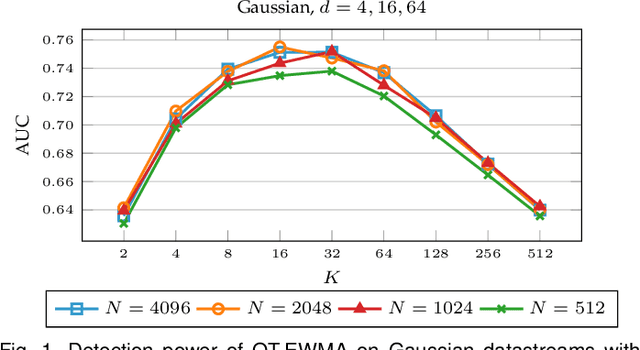

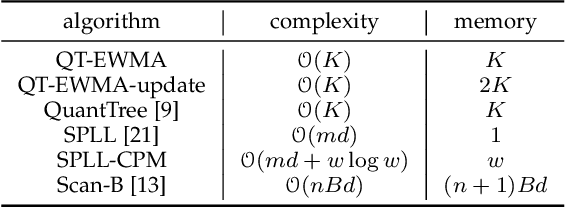
Abstract:We address the problem of online change detection in multivariate datastreams, and we introduce QuantTree Exponentially Weighted Moving Average (QT-EWMA), a nonparametric change-detection algorithm that can control the expected time before a false alarm, yielding a desired Average Run Length (ARL$_0$). Controlling false alarms is crucial in many applications and is rarely guaranteed by online change-detection algorithms that can monitor multivariate datastreams without knowing the data distribution. Like many change-detection algorithms, QT-EWMA builds a model of the data distribution, in our case a QuantTree histogram, from a stationary training set. To monitor datastreams even when the training set is extremely small, we propose QT-EWMA-update, which incrementally updates the QuantTree histogram during monitoring, always keeping the ARL$_0$ under control. Our experiments, performed on synthetic and real-world datastreams, demonstrate that QT-EWMA and QT-EWMA-update control the ARL$_0$ and the false alarm rate better than state-of-the-art methods operating in similar conditions, achieving lower or comparable detection delays.
 Add to Chrome
Add to Chrome Add to Firefox
Add to Firefox Add to Edge
Add to Edge